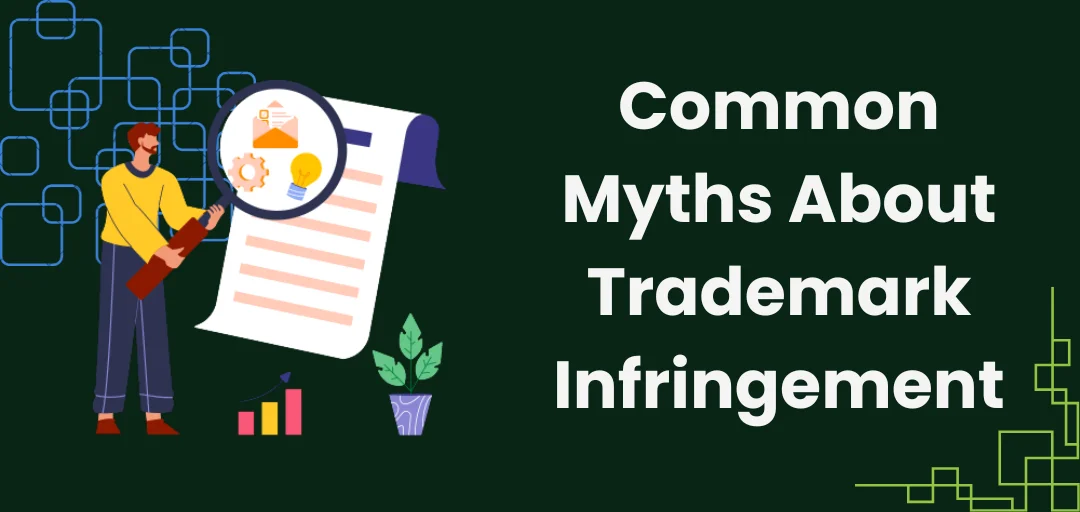Common Myths About Trademark Infringement
Trademark infringement is a serious issue for businesses and individuals who own trademarks. However, there are many myths surrounding this topic that can lead to confusion and poor decision-making. Misunderstandings about trademark infringement can result in costly legal battles or a failure to protect intellectual property. In this blog, we will explore some of the most common myths about trademark infringement, providing clarity and helping business owners understand the true nature of trademark protection.
What is Trademark Infringement?
Trademark infringement occurs when someone uses a registered trademark or a confusingly similar mark without permission. This could happen in various ways, such as using the same logo, name, or symbol in a manner that could mislead consumers or dilute the distinctive nature of a trademark. Trademark laws exist to protect the intellectual property of businesses, ensuring they can maintain their identity in the marketplace and prevent confusion among consumers.
Myth 1: “Trademark Infringement Only Happens When There is an Exact Copy”
One of the biggest myths about trademark infringement is that it only applies when there is an exact copy of a trademark. In reality, trademark infringement can occur even if the mark is not identical. As long as the alleged infringing mark is similar enough to cause confusion among consumers, it may constitute infringement.
For example, a business might use a logo with a similar color scheme or font to a well-known brand. Even though the design is not identical, it could still cause confusion in the minds of consumers, leading them to believe there is a connection between the two companies. This is why it is essential for businesses to protect their trademarks from similar marks that might not be exact copies but could still lead to confusion.
Myth 2: “I Can Use a Trademark if It’s Not Registered”
Another common misconception is that a trademark can be used freely if it is not registered. However, this is far from the truth. While it is true that common law provides some protection for unregistered trademarks, the rights are limited compared to those offered by registered trademarks.
An unregistered trademark might still be infringed upon, but proving ownership and protecting the mark in legal disputes can be challenging. The best way to protect a trademark is by registering it with the appropriate authorities, as this provides a public record of your ownership and enhances your ability to enforce your rights in case of trademark infringement.
Myth 3: “Trademark Infringement Only Occurs if I Sell the Same Product or Service”
Many business owners believe that trademark infringement only happens if the infringing company is selling the same product or service. In fact, trademark infringement can occur even if the goods or services offered by both parties are not identical, as long as they are related or could cause confusion in the market.
For instance, a company selling “iPhone cases” might be infringing on the Apple trademark, even if they are not selling smartphones. The overlap in the target audience and the potential confusion among consumers about the brand association can result in trademark infringement.
Myth 4: “As Long as I Use a Disclaimer, I Won’t Be Charged with Trademark Infringement”
Some people mistakenly believe that including a disclaimer, such as “This product is not affiliated with [Trademark Owner]” or “This is not an official product of [Trademark Owner],” will protect them from trademark infringement. Unfortunately, this is not the case.
A disclaimer does not shield you from legal liability if your use of the trademark is likely to cause confusion or damage the reputation of the trademark owner. Trademark owners have the right to protect their marks from unauthorized use, and a disclaimer does not necessarily negate the possibility of trademark infringement.
Myth 5: “I Can Use a Trademark If It’s Not Registered in My Country”
Trademark laws vary from one country to another, and just because a trademark is not registered in your country does not mean it is free to use. If the trademark is registered in another country, it could still be protected under international agreements, such as the Madrid Agreement or the TRIPS Agreement, which provide for the protection of intellectual property rights across borders.
Therefore, even if a trademark is not registered in your country, you could still be at risk of infringing on a foreign trademark if it is well-known or registered in another jurisdiction. It is always essential to conduct a thorough trademark search before using a name or logo to ensure you are not infringing on any rights, whether locally or internationally.
Myth 6: “Trademark Infringement Only Applies to Logos and Names”
Many people believe that trademark infringement only applies to logos and brand names. While these are the most common types of trademarks, infringement can also extend to other elements of intellectual property. Trademarks can include slogans, packaging designs, color schemes, sounds, and even product shapes that are distinctive to a brand.
For example, if a company uses a slogan that is very similar to a registered trademark’s slogan, it could be considered trademark infringement. The key factor is whether the use of the mark creates confusion or dilutes the distinctiveness of the original trademark.
Myth 7: “If I’m Not Making Money from the Infringed Trademark, It’s Not Infringement”
Some individuals mistakenly believe that trademark infringement only occurs if they are profiting from the use of someone else’s trademark. However, the mere use of a confusingly similar trademark, even if you are not making money from it, can still constitute infringement.
The harm caused by trademark infringement is not solely about profit generation. The primary concern is the likelihood of confusion among consumers, which can damage the reputation of the original trademark and cause consumer deception. Therefore, even if no profits are made, the infringement could still be harmful.
Myth 8: “Trademark Infringement Only Applies to Competitors”
Another misconception is that trademark infringement only applies when a competitor uses a similar trademark. In reality, trademark infringement can occur between any two businesses, even if they are not direct competitors.
If a business in an unrelated industry uses a trademark that is confusingly similar to another trademark, it can still result in legal action. The key factor is whether the use of the trademark is likely to cause confusion among consumers or dilute the distinctiveness of the original mark.
Myth 9: “As Long as I Change the Name or Logo Slightly, I Won’t Infringe”
Some individuals believe that by making minor modifications to a trademark, they can avoid infringement. However, this is not always the case. Even small changes to a trademark, such as altering the font, color scheme, or adding elements, may not be enough to avoid confusion if the modified mark is still similar enough to the original.
In trademark law, the test for infringement is whether the new mark is likely to cause confusion with the existing trademark. If it does, even a slight modification may not protect you from legal consequences.
Myth 10: “Trademark Infringement Is Only an Issue for Large Companies”
Many small business owners believe that trademark infringement is only a concern for large corporations with well-known brands. However, trademark protection is essential for businesses of all sizes. Small businesses are just as vulnerable to trademark infringement as large corporations, and they must take proactive steps to protect their intellectual property.
Even a small business can suffer significant losses if their trademark is infringed upon. Not only could it result in legal costs, but it could also harm the reputation and identity of the business. Therefore, trademark registration and monitoring are vital for businesses of all sizes.
Conclusion
Trademark infringement is a complex and nuanced issue, and understanding the facts can help business owners avoid legal pitfalls and protect their intellectual property. By dispelling these common myths, businesses can make informed decisions about trademark protection and avoid costly mistakes. Whether you’re just starting your business or looking to expand, being aware of the realities of trademark infringement is essential for safeguarding your brand and reputation.
Our Trademark Services

Trademark Registration
Trademark registration is the process of legally securing exclusive rights to a brand name, logo, or slogan, protecting it from unauthorized use and ensuring nationwide recognition for the owner.

Trademark Objection
Trademark objection occurs when the registrar raises concerns or questions regarding a trademark application, typically due to potential conflicts with existing marks or lack of distinctiveness.

Trademark Opposition
Trademark opposition allows third parties to challenge a pending trademark application, typically because they believe it may conflict with their own brand rights or cause market confusion.





